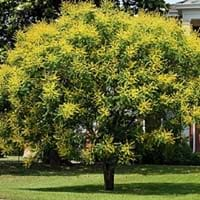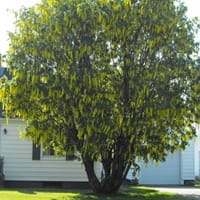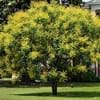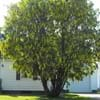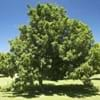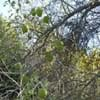Life Span
Perennial
Perennial
Origin
Southern Asia, Southeastern Asia, China
Brazil
Types
Not Available
Not available
Habitat
Deciduous forests, Subtropical climates, Tropical regions
Shady Edge, Woodland Garden Dappled Shade
USDA Hardiness Zone
10-13
11-15
Sunset Zone
H1, H2
H1, H2, 23, 24
Habit
Oval or Rounded
Upright/Erect
Flower Color
Pink, Light Pink, Lavender, Blue Violet
Yellow, Lemon yellow
Flower Color Modifier
Bicolor
Bicolor
Fruit Color
Sandy Brown, Chocolate
Gray Green
Leaf Color in Spring
Green, Light Green
Green
Leaf Color in Summer
Green
Green
Leaf Color in Fall
Red, Green, Copper
Green
Leaf Color in Winter
Red, Copper
Green
Leaf Shape
Oval to egg shaped
Compound
Plant Season
Spring, Summer, Fall
Spring, Summer, Fall
Sunlight
Full Sun, Partial Sun
Full Sun, Partial Sun, Partial shade
Type of Soil
Loam, Sand
Loam
The pH of Soil
Acidic, Neutral
Acidic, Neutral
Soil Drainage
Average
Average
Bloom Time
Spring, Late Spring, Early Summer, Summer, Late Summer, Early Fall, Fall
Summer, Late Summer
Tolerances
Wet Site
Drought
Where to Plant?
Ground
Ground
How to Plant?
Seedlings, Spores
Budding, Grafting, root cutting, Seedlings
Plant Maintenance
Low
Medium
Watering Requirements
Average Water Needs
Average Water Needs, Do Not over Water, Keep the Soil well drained, Requires more often in extreme heat, Requires regular watering
In Summer
Lots of watering
Lots of watering
In Spring
Moderate
Moderate
In Winter
Average Water
Average Water
Soil pH
Acidic, Neutral
Acidic, Neutral
Soil Type
Loam, Sand
Loam
Soil Drainage Capacity
Average
Average
Sun Exposure
Full Sun, Partial Sun
Full Sun, Partial Sun, Partial shade
Pruning
Dispose of diseased portions, Prune before Winter, Prune for shortening long shoots
Remove damaged leaves, Remove dead branches, Remove dead leaves
Fertilizers
Apply 10-10-10 amount, as it is a flowering plant, use high phosphorous content fertilizer
All-Purpose Liquid Fertilizer
Pests and Diseases
Aphids, Bacteria wilt, Downy mildew
Canker, Caterpillars, Root Pathogen
Plant Tolerance
Heat Tolerance, Shade areas, Shallow soil, Soil Compaction
Drought
Flower Petal Number
Single
Single
Foliage Texture
Coarse
Coarse
Foliage Sheen
Glossy
Glossy
Attracts
Birds, Butterflies, Hummingbirds
Butterflies
Allergy
allergic conjunctivitis, Anxiety, Red eyes, sneezing, Sore eyes
allergic reaction, poisonous if ingested, Skin irritation
Aesthetic Uses
Bouquets, Cottage Garden, Showy Purposes
Formal Garden, Used in parkland
Beauty Benefits
For treating wrinkles, Hair Conditioner, Making cosmetics
Not Available
Environmental Uses
Air purification, Prevent Soil Erosion, Shadow Tree
Air purification
Medicinal Uses
Detoxification, Hormonal Balancing, Liver problems, Obesity, Regulates Blood Sugar
Vomiting
Part of Plant Used
Leaves
Seeds
Other Uses
Biomass for fuel, Can be made into a herbal tea, Cosmetics, Making Sweet Scented Oil
Pesticide, Used as Ornamental plant, Wood is used for making furniture
Used As Indoor Plant
No
No
Used As Outdoor Plant
Yes
Yes
Garden Design
Feature Plant, Shade Trees, Street Trees
Feature Plant, Shade Trees, Tropical
Botanical Name
LAGERSTROEMIA speciosa
LOPHANTHERA lactescens
Common Name
Pride-of-India, Queen's crape-myrtle,
Golden Chain Tree
In German
Königinblume
Goldregen (Pflanze)
In French
lilas des Indes, Lagerstroemia speciosa
Laburnum
In Spanish
Banabá Plant
Laburnum
In Greek
Lagerstroemia speciosa
Laburnum
In Portuguese
Resedá-gigante
Laburnum
In Polish
Lagerstremia wspaniała
Złotokap
In Latin
Lagerstroemia speciosa
Laburnum
Phylum
Magnoliophyta
Tracheophyta
Class
Magnoliopsida
Magnoliopsida
Family
Lythraceae
Fabaceae
Genus
Lagerstroemia
Laburnum
Clade
Angiosperms, Rosids
Angiosperms, Eudicots, Rosids
Tribe
Not Available
Not Available
Subfamily
Not Available
Faboideae
Number of Species
Not Available
Importance of Pride of India and Golden Chain Tree
Want to have the most appropriate plant for your garden? You might want to know the importance of Pride of India and Golden Chain Tree. Basically, these two plants vary in many aspects. Compare Pride of India and Golden Chain Tree as they differ in many characteristics such as their life, care, benefits, facts, etc. Every gardener must at least have the slightest clue about the plants he wants to plant in his garden. Compare their benefits, which differ in many ways like facts and uses. The medicinal use of Pride of India is Detoxification, Hormonal Balancing, Liver problems, Obesity and Regulates Blood Sugar whereas of Golden Chain Tree is Vomiting. Pride of India has beauty benefits as follows: For treating wrinkles, Hair Conditioner and Making cosmetics while Golden Chain Tree has beauty benefits as follows: For treating wrinkles, Hair Conditioner and Making cosmetics.
Compare Facts of Pride of India vs Golden Chain Tree
How to choose the best garden plant for your garden depending upon its facts? Here garden plant comparison will help you to solve this query. Compare the facts of Pride of India vs Golden Chain Tree and know which one to choose. As garden plants have benefits and other uses, allergy is also a major drawback of plants for some people. Allergic reactions of Pride of India are allergic conjunctivitis, Anxiety, Red eyes, sneezing and Sore eyes whereas of Golden Chain Tree have allergic reaction, poisonous if ingested and Skin irritation respectively. Having a fruit bearing plant in your garden can be a plus point of your garden. Pride of India has no showy fruits and Golden Chain Tree has no showy fruits. Also Pride of India is not flowering and Golden Chain Tree is not flowering . You can compare Pride of India and Golden Chain Tree facts and facts of other plants too.
